
How to Use Soil Moisture Sensor: Examples, Pinouts, and Specs
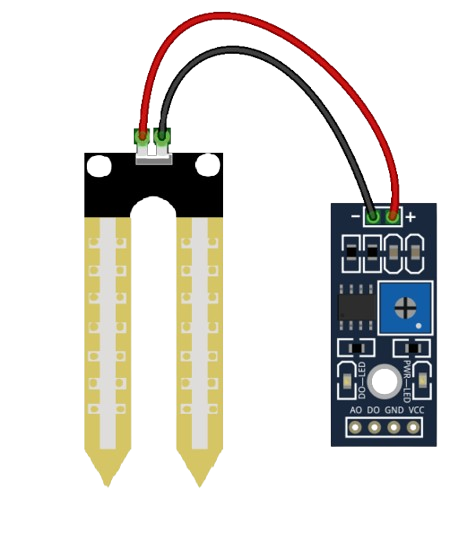
 Design with Soil Moisture Sensor in Cirkit Designer
Design with Soil Moisture Sensor in Cirkit DesignerIntroduction
The Soil Moisture Sensor is a device designed to measure the volumetric water content in soil. It provides real-time data that can be used to monitor soil moisture levels, making it an essential tool for irrigation systems, agricultural automation, and plant health monitoring. By integrating this sensor into a system, users can optimize water usage and ensure plants receive adequate hydration.
Explore Projects Built with Soil Moisture Sensor
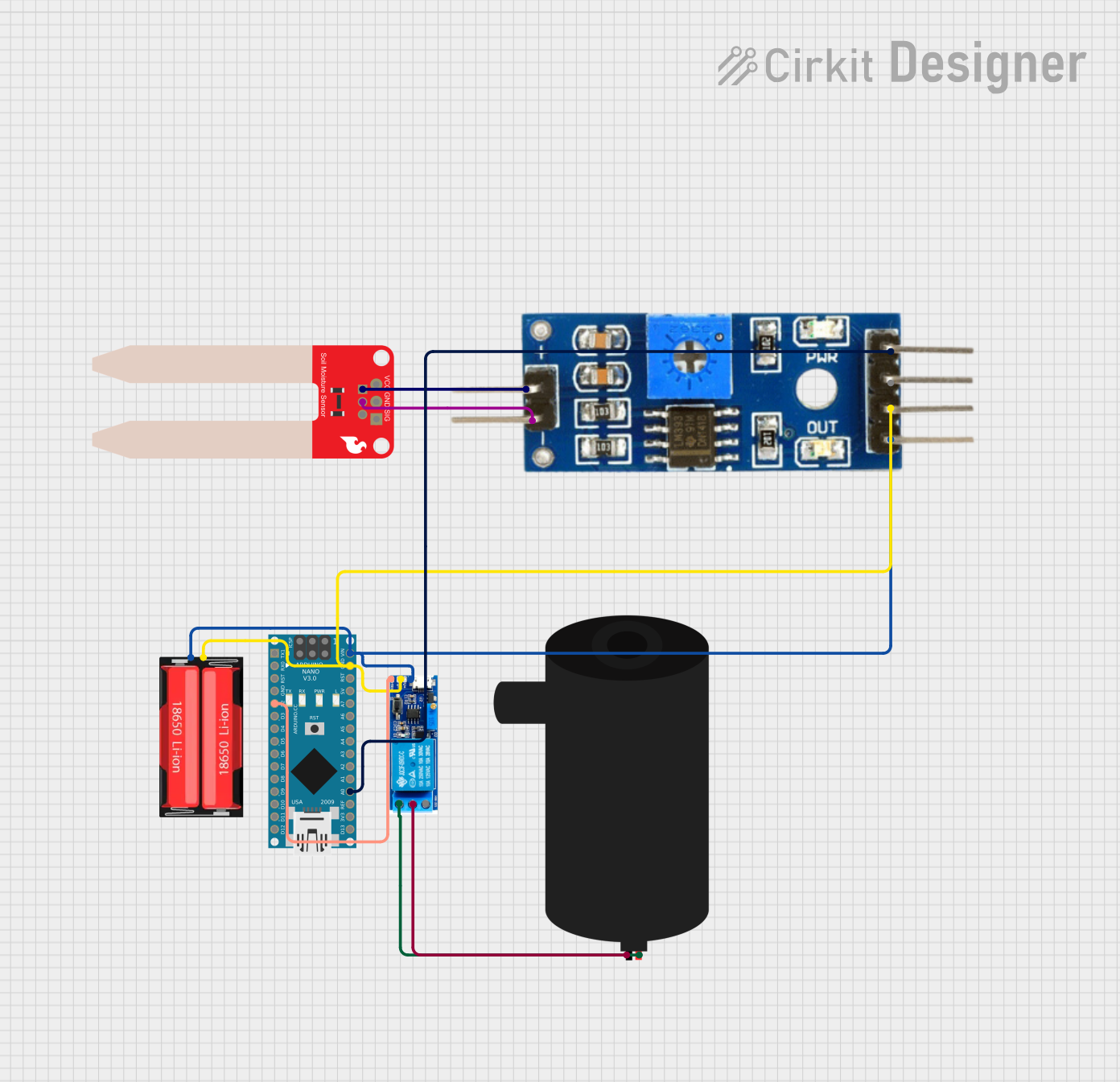
 Open Project in Cirkit Designer
Open Project in Cirkit Designer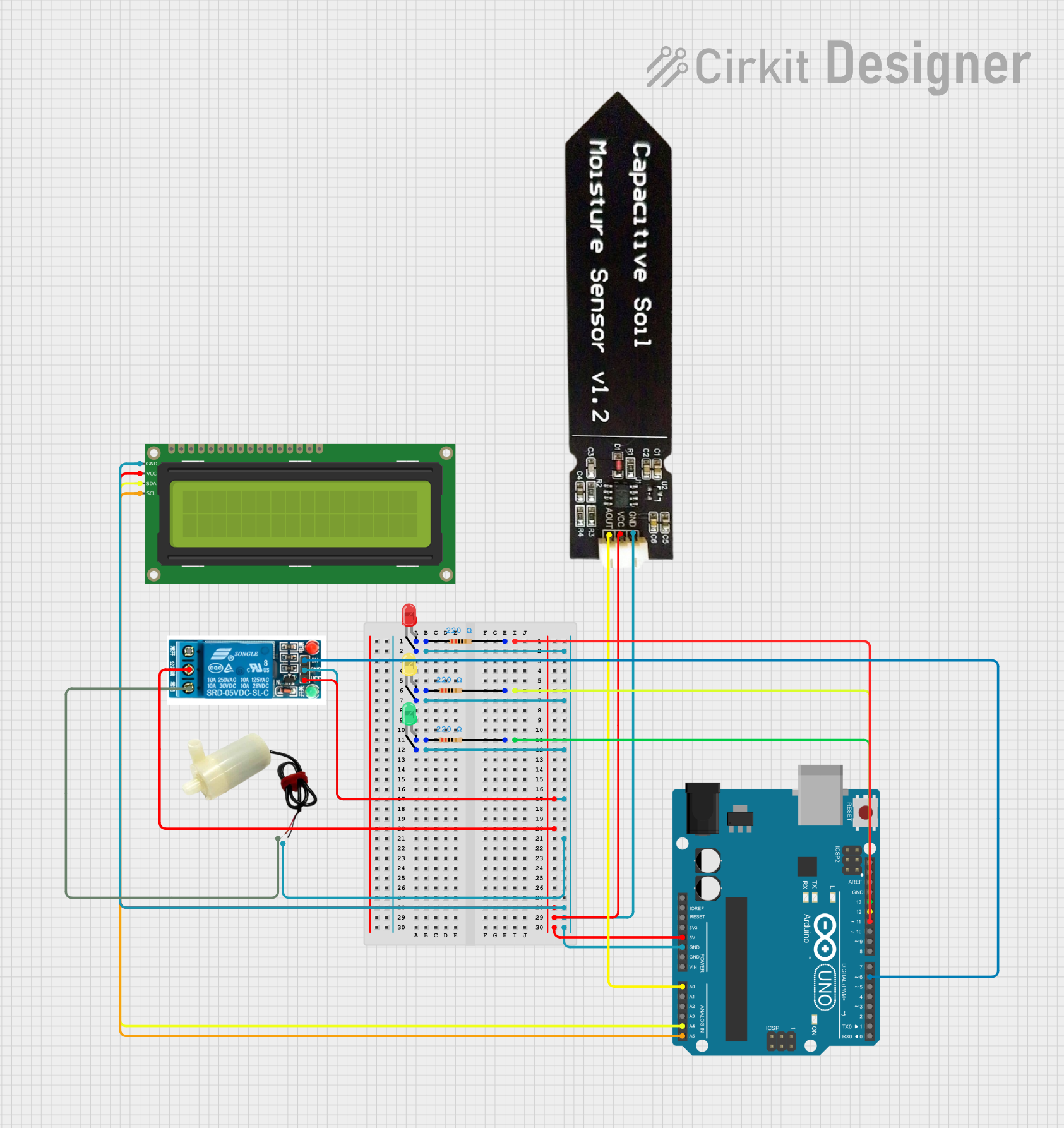
 Open Project in Cirkit Designer
Open Project in Cirkit Designer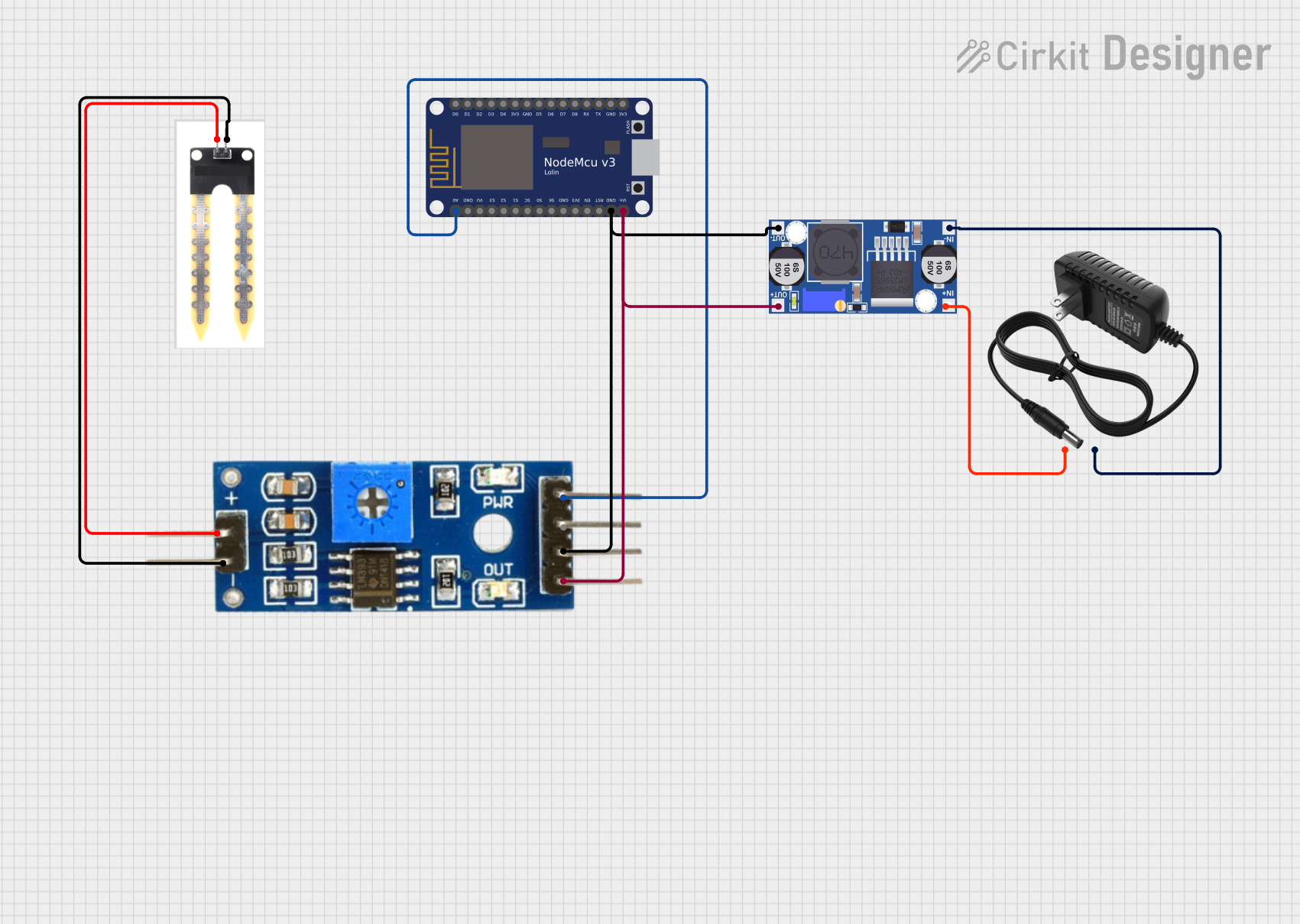
 Open Project in Cirkit Designer
Open Project in Cirkit Designer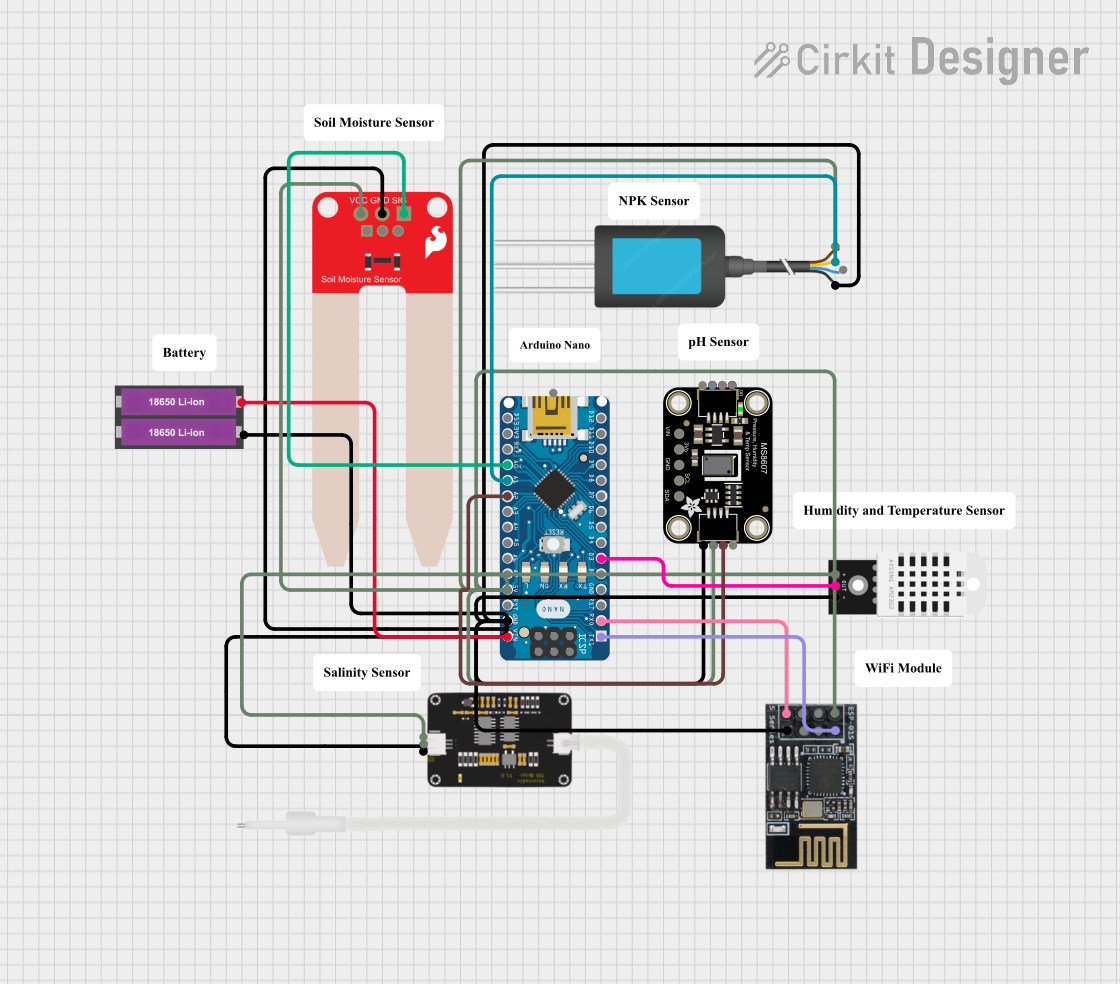
 Open Project in Cirkit Designer
Open Project in Cirkit DesignerExplore Projects Built with Soil Moisture Sensor

 Open Project in Cirkit Designer
Open Project in Cirkit Designer
 Open Project in Cirkit Designer
Open Project in Cirkit Designer
 Open Project in Cirkit Designer
Open Project in Cirkit Designer
 Open Project in Cirkit Designer
Open Project in Cirkit DesignerCommon Applications and Use Cases
- Automated irrigation systems
- Greenhouse monitoring
- Smart gardening projects
- Soil analysis for agricultural research
- Environmental monitoring systems
Technical Specifications
The Soil Moisture Sensor typically consists of two probes that measure the resistance of the soil, which correlates to its moisture content. Below are the key technical details:
| Parameter | Value |
|---|---|
| Operating Voltage | 3.3V - 5V |
| Output Signal | Analog (0-1023) or Digital (High/Low) |
| Current Consumption | < 20mA |
| Operating Temperature | -10°C to 60°C |
| Dimensions | ~60mm x 20mm x 5mm |
Pin Configuration and Descriptions
| Pin Name | Type | Description |
|---|---|---|
| VCC | Power | Connect to 3.3V or 5V power supply |
| GND | Ground | Connect to the ground of the power supply |
| A0 | Analog Out | Outputs an analog signal proportional to soil moisture |
| D0 | Digital Out | Outputs a digital signal (High/Low) based on threshold |
| Adjust | Potentiometer | Used to set the threshold for the digital output |
Usage Instructions
How to Use the Component in a Circuit
Wiring the Sensor:
- Connect the
VCCpin to the 5V pin of your microcontroller (e.g., Arduino UNO). - Connect the
GNDpin to the ground (GND) of your microcontroller. - For analog readings, connect the
A0pin to an analog input pin (e.g., A0 on Arduino UNO). - For digital readings, connect the
D0pin to a digital input pin (e.g., D2 on Arduino UNO).
- Connect the
Calibrating the Sensor:
- Insert the sensor probes into the soil.
- Use the potentiometer to adjust the threshold for the digital output. Turn it clockwise or counterclockwise to set the desired moisture level for triggering the digital signal.
Reading Data:
- For analog readings, the sensor outputs a value between 0 and 1023, where lower values indicate higher moisture levels.
- For digital readings, the sensor outputs either HIGH (dry soil) or LOW (wet soil) based on the threshold.
Important Considerations and Best Practices
- Avoid prolonged exposure of the sensor to water, as it may corrode the probes.
- Use the sensor in well-drained soil to prevent waterlogging, which can damage the sensor.
- If using the sensor outdoors, consider waterproofing the connections to protect against environmental factors.
- Periodically clean the probes to ensure accurate readings.
Example Code for Arduino UNO
Below is an example code to read both analog and digital outputs from the Soil Moisture Sensor:
// Define pin connections
const int analogPin = A0; // Analog output pin connected to A0
const int digitalPin = 2; // Digital output pin connected to D2
void setup() {
Serial.begin(9600); // Initialize serial communication at 9600 baud
pinMode(digitalPin, INPUT); // Set digital pin as input
}
void loop() {
// Read analog value from the sensor
int analogValue = analogRead(analogPin);
Serial.print("Analog Value: ");
Serial.println(analogValue);
// Read digital value from the sensor
int digitalValue = digitalRead(digitalPin);
Serial.print("Digital Value: ");
Serial.println(digitalValue);
// Add a delay for readability
delay(1000); // Wait for 1 second before the next reading
}
Troubleshooting and FAQs
Common Issues and Solutions
No Output from the Sensor:
- Ensure the sensor is properly connected to the power supply and ground.
- Verify that the microcontroller pins are correctly configured in the code.
Inaccurate Readings:
- Check for dirt or corrosion on the sensor probes and clean them if necessary.
- Ensure the sensor is inserted into the soil at an appropriate depth.
Digital Output Always HIGH or LOW:
- Adjust the potentiometer to recalibrate the threshold.
- Verify that the soil moisture level is within the sensor's detectable range.
Sensor Corrosion:
- Avoid leaving the sensor in wet soil for extended periods.
- Consider using a capacitive soil moisture sensor for better durability.
FAQs
Q: Can this sensor be used in hydroponic systems?
A: No, this sensor is designed for soil-based applications. For hydroponics, consider using a water level or EC (electrical conductivity) sensor.
Q: How deep should the sensor be inserted into the soil?
A: Insert the sensor probes at least halfway into the soil for accurate readings.
Q: Can I use this sensor with a Raspberry Pi?
A: Yes, but you will need an ADC (Analog-to-Digital Converter) to read the analog output, as Raspberry Pi does not have built-in analog input pins.
Q: How long does the sensor last?
A: The lifespan depends on usage and environmental conditions. Regular cleaning and proper use can extend its life. For long-term projects, consider using a capacitive soil moisture sensor.